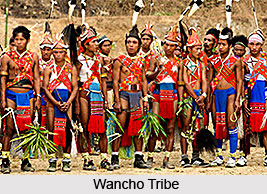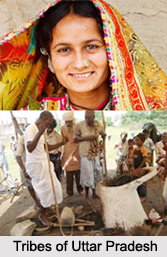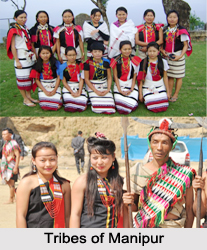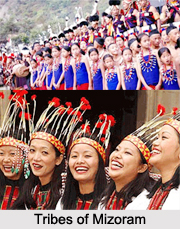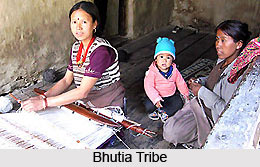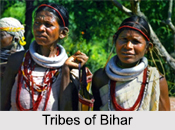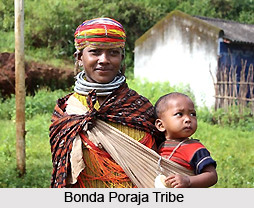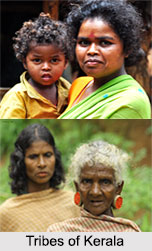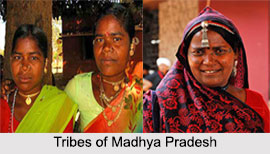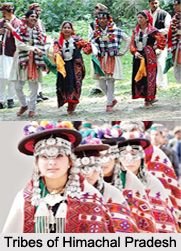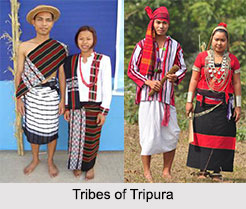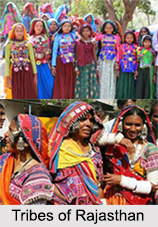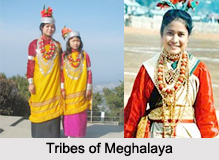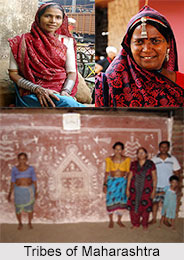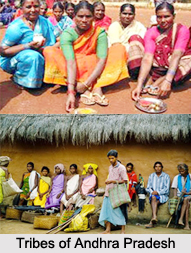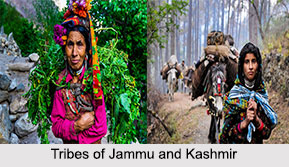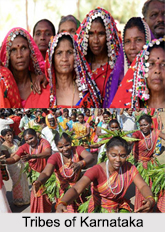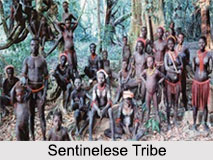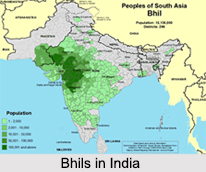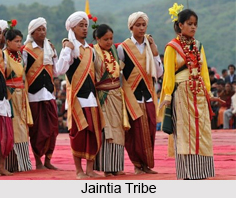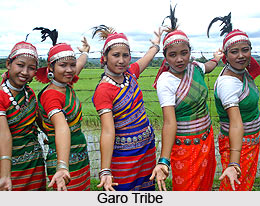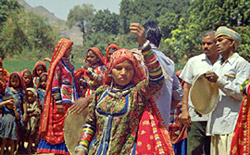Binjhia tribes live in different parts of Bihar and this tribal community prefer to live amiable with other tribes mainly in and around the forest and hilly areas. Some of the anthropologists identify them as Binjhwar tribes. The Binjhia tribes have rich heritage of tradition and culture. These are reflected in their costumes, houses, culture, festivals etc. The Binjhia built their houses using tiles wood, bamboo, mud, leaves, and grasses.
The Binjhia men wear half dhoti and a `Gamachha` when they remain in the house. The Binjhia tribes wear Dhoti, Kurta, Ganji while going out .Women wear Saree along with petticoat and blouse. Moreover all the Binjhia women folks are also very fond of wearing ornaments in finger, wrist feet, neck and earrings. Steel, copper, bronze, glass, silver and are used to make these beautiful ornaments. They also wear beads of forest seeds and thread made ornaments. Various instruments are used while doing cultivation are loraha, silant and okhali.
The societal structure of these Binjhia tribes follows the pattern and style of the other tribes who also reside in the Bihar state. The family composition is that of any of the nuclear family comprising of father, mother and their unmarried children. Patriarchy is prevalent with father as the head of the family and also the decision maker. Descent is patrilineal including only male descendants of a known male predecessor who has got the right of inheritance and succession.
Binjhi tribes are peace lovers always maintaining harmonious relations with the families of the lineage, clan and tribe. Marriage is an important ritual, which comes in the life of every normal Binjhia. Right age of getting married, according to these Binjhia tribes, is between 18 to 25 years of both bride and groom. In fact, the Binjhia tribes allow rule of tribe endogamy and clan exogamy in a strict manner. They do not permit inter-tribal marriage and also marriage with the same clans is permissible. Those who do not follow these prevalent rules of endogamy and exogamy are kicked out the society. If the person accepts their faults and pays some amount, he is allowed to get back. Monogamy is prevalent, however, widow remarriages are permissible.
As far as the occupation of these Binjhia tribes are concerned, they are mainly farmers producing a lot of products including vegetables, fruits etc. Fishing as a profession is also in vogue. Some of these Binjhia tribes weave beautiful baskets and clothes. These Binjhia tribes love to domesticate various animals like tame goat, chicks and ducks. Nowadays, there are instances where one can find the Binjhia tribe make visit to all the industries of the state so that they can adapt to the profession of a casual or contract labor. They also frequent forest areas in order to work as forest labour.
A significant ritual of paying price to the bride is being observed. The bride price is decided at the time of negotiation. It is the father of the boy who approaches the father of the girl for marriage. The fathers or the boy and the girl decide. The bride price is paid either in cash or kind. When the father of the boy accepts the demand, the marriage is declared as settled. Special marriage rituals are held at the time of marriage ceremonies. On the day of marriage, both the bride and the groom do `puribicatory bath` in their individual households and also wear new dresses. They also put kajal, in eyes and flower beady in their necks and wrist.
All the female members of the groom`s family execute white magic for the success of the marriage. They scatter water, flowers and `sun fried rice` over the groom. From the groom`s family also, all the male members accompany him in `Barat` party. For going to the marriage site, the groom rides on a palaki or bicycle or rickshaw.
Binjhia tribes worship various gods and goddesses. Several sacred centres are located near their dwelling lands. Sometimes the people of this tribal community sacrifice animals to appease their gods. Festivals like Sohrai, Karma, Sarhul, Kartik Purnima, Jitia, Dussehra, Diwali, etc. are celebrated by the people of this community with tribal songs and dances.
